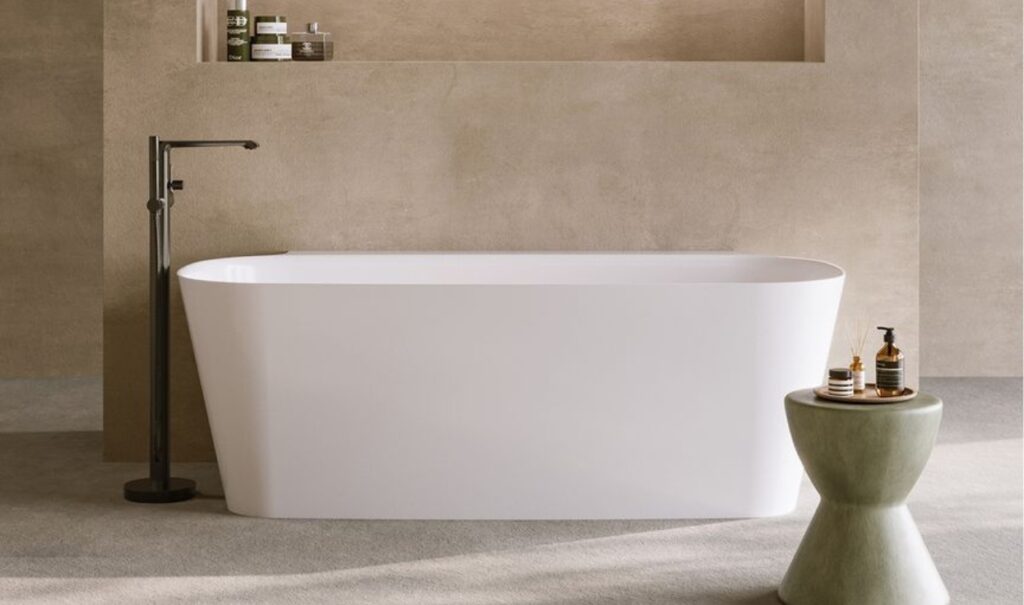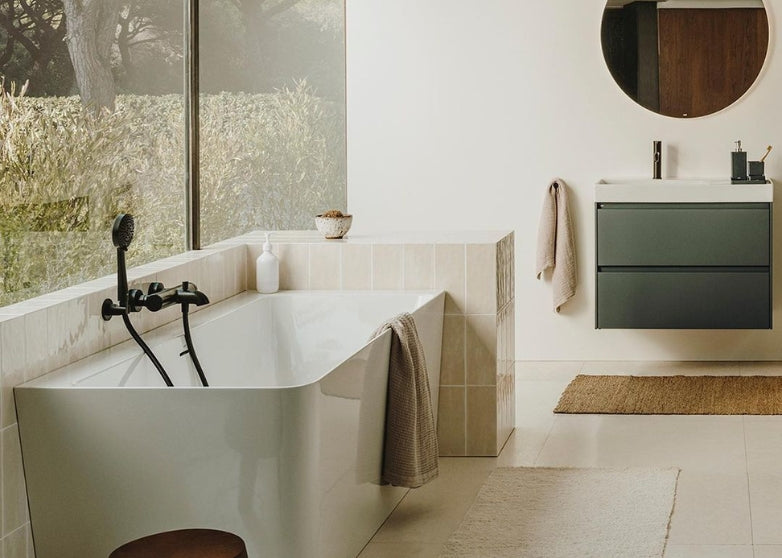Share
The bathroom is an essential space in our homes where we begin and end each day. It serves as a sanctuary for relaxation, making it crucial to design it to be both functional and aesthetically pleasing. Whether you're renovating an existing bathroom or starting from scratch, these four steps will guide you in creating the perfect bathroom that combines style, comfort, and practicality.
Step 1: Plan and Define Your Needs
The first step in designing the perfect bathroom is to plan and define your specific needs. Consider who will be using the bathroom and how it will be used. Are you designing a master bathroom, a family bathroom, or a guest bathroom? This will help determine the size, layout, and fixtures required. Assess your storage needs, lighting preferences, and any special features you desire, such as a freestanding bathtub or a walk-in shower. Creating a list of priorities will guide you in the decision-making process and ensure that the final design meets your requirements.

Step 2: Choose the Right Layout and Fixtures
Once you have a clear understanding of your needs, it's time to select the layout and fixtures that will ensure the functionality and flow of your bathroom. Consider the available space and how you can best utilise it. If space is limited, consider space-saving solutions such as wall-mounted basins and toilets or built-in storage units. If you have more room to work with, explore different layout options, such as separating the shower and bathtub, or incorporating a double vanity for added convenience. Additionally, select fixtures that match your style and complement the overall theme of your bathroom.
Step 3: Focus on Lighting and Ventilation
Lighting and ventilation are crucial aspects of any well-designed bathroom. Natural light can create an open and inviting atmosphere, so if possible, maximise the use of windows or skylights. For artificial lighting, consider a layered approach by combining ambient, task, and accent lighting. This will allow you to create different moods and accommodate various activities, such as applying makeup or taking a relaxing bath. Adequate ventilation is equally important to prevent mould and maintain a fresh environment. Install proper ventilation systems like exhaust fans or windows that can be opened to promote air circulation.
Step 4: Incorporate Style and Personal Touches
The final step in designing the perfect bathroom is to infuse your personal style and add unique touches that make the space truly yours. Choose a color scheme that complements your taste and creates a cohesive look throughout the bathroom. Consider the overall aesthetic you want to achieve—whether it's modern, traditional, minimalist, or rustic—and select materials, finishes, and accessories accordingly. Pay attention to details such as faucets, handles, mirrors, and towel racks, as they can greatly enhance the overall design. Finally, add personal touches like artwork, plants, or decorative elements to make the bathroom feel warm and inviting.

The bathroom is an essential space in our homes where we begin and end each day. It serves as a sanctuary for relaxation, making it crucial to design it to be both functional and aesthetically pleasing. Whether you're renovating an existing bathroom or starting from scratch, these four steps will guide you in creating the perfect bathroom that combines style, comfort, and practicality.
Step 1: Plan and Define Your Needs
The first step in designing the perfect bathroom is to plan and define your specific needs. Consider who will be using the bathroom and how it will be used. Are you designing a master bathroom, a family bathroom, or a guest bathroom? This will help determine the size, layout, and fixtures required. Assess your storage needs, lighting preferences, and any special features you desire, such as a freestanding bathtub or a walk-in shower. Creating a list of priorities will guide you in the decision-making process and ensure that the final design meets your requirements.

Step 2: Choose the Right Layout and Fixtures
Once you have a clear understanding of your needs, it's time to select the layout and fixtures that will ensure the functionality and flow of your bathroom. Consider the available space and how you can best utilise it. If space is limited, consider space-saving solutions such as wall-mounted basins and toilets or built-in storage units. If you have more room to work with, explore different layout options, such as separating the shower and bathtub, or incorporating a double vanity for added convenience. Additionally, select fixtures that match your style and complement the overall theme of your bathroom.
Step 3: Focus on Lighting and Ventilation
Lighting and ventilation are crucial aspects of any well-designed bathroom. Natural light can create an open and inviting atmosphere, so if possible, maximise the use of windows or skylights. For artificial lighting, consider a layered approach by combining ambient, task, and accent lighting. This will allow you to create different moods and accommodate various activities, such as applying makeup or taking a relaxing bath. Adequate ventilation is equally important to prevent mould and maintain a fresh environment. Install proper ventilation systems like exhaust fans or windows that can be opened to promote air circulation.
Step 4: Incorporate Style and Personal Touches
The final step in designing the perfect bathroom is to infuse your personal style and add unique touches that make the space truly yours. Choose a color scheme that complements your taste and creates a cohesive look throughout the bathroom. Consider the overall aesthetic you want to achieve—whether it's modern, traditional, minimalist, or rustic—and select materials, finishes, and accessories accordingly. Pay attention to details such as faucets, handles, mirrors, and towel racks, as they can greatly enhance the overall design. Finally, add personal touches like artwork, plants, or decorative elements to make the bathroom feel warm and inviting.

- Choosing a selection results in a full page refresh.
- Opens in a new window.
Christmas Holiday Notice
Please note, all our branches will close on Tuesday 23rd December, re-opening Friday 2nd January as usual.

